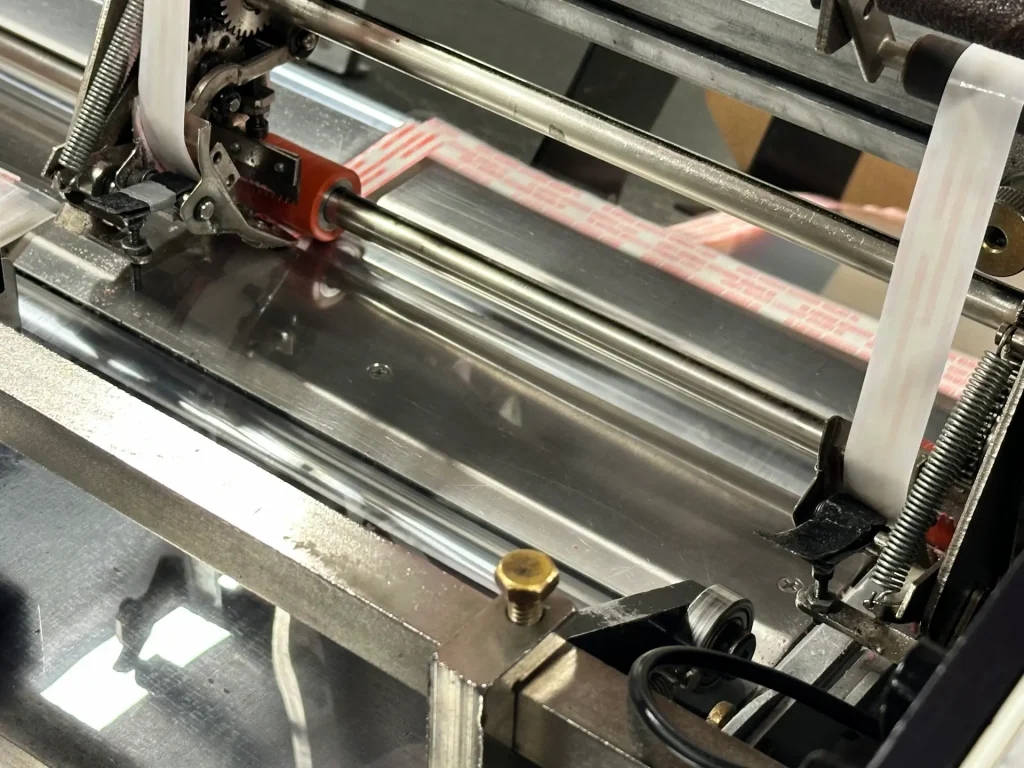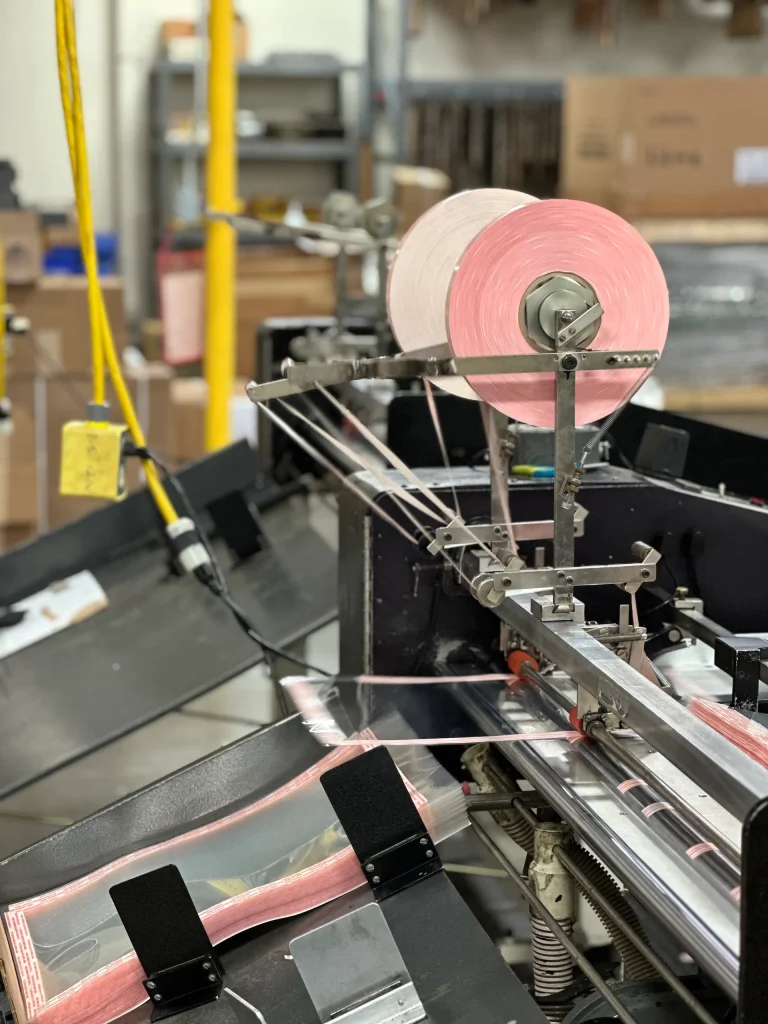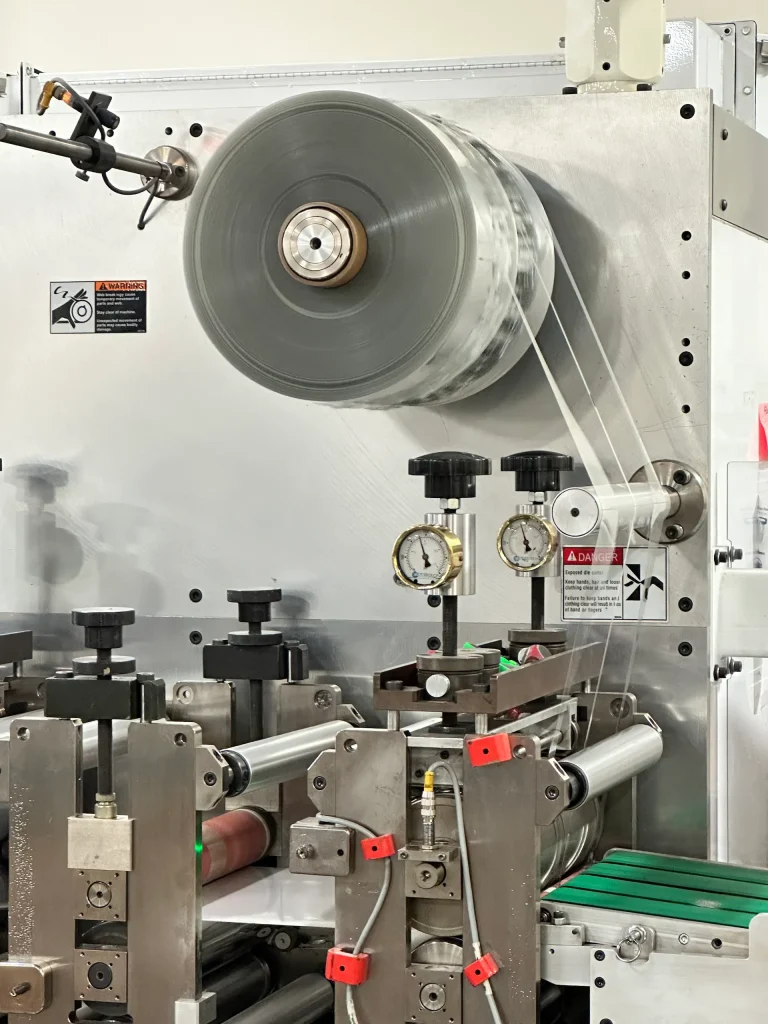
In our 75 years of experience, we have become one of the best in the world at foam die-cutting. Foam is unique from other die-cut materials in that the material will vary widely in density and compression qualities, will require blades to be sharpened more often to cleanly slice the foam, and precise cut depth control is critical to ensure there are no incomplete cuts or excessive material waste. If a company lacks experience with these factors, manufacturing nonconformities will be more common in their foam products.
Because we have close to eight decades of experience cutting foam products, Colvin Friedman is no stranger to the best practices that ensure product deliveries of high quality. Foams are available in a number of substrates and are some of the most commonly die-cut materials. While we can cut nearly any type of foam, we most commonly cut the following:
Among die-cut materials, foam is particularly unique and presents a number of specific challenges to the die cutting process. Some of the most pressing concerns associated with foam die-cutting are outlined below, along with some best practices to ensure the efficacy of the progress.
Concern: Foams generally compress when pushed down as they are in the die cutting process. This is particularly true of open-cell foams and this can alter their density and cause tearing or uneven edges. Different foams also recover from compression at different rates. This must be accounted for.
Best Practice: Both the compression and recovery of the material should be considered and sharp dies should be utilized to help guarantee a cleaner cut and a smooth cut edge.
Concern: In addition to maintaining generally sharp blades, foams can wear down the blades on dies more quickly than other materials. Specifically, certain foams often require specific blade types, such as serrated or smooth-edged, to handle their unique characteristics.
Best Practice: Institute continual blade maintenance practices throughout the production process and ensure the dies are tooled specifically to the intended material.

Concern: Certain varieties of foams are especially susceptible to heat or friction generated from the die cutting process, as they may warp or fray, causing defective units and wasting material.
Best Practice: Use thinner blades as necessary to reduce friction. For heat-sensitive materials, build cool-down time into the cutting process, or utilize cutting methods that cause minimal heat.
Concern: Due to the degree to which foams can vary in density, they may require wholly different processes to effectively cut. Thicker foams may be better cut with compression cutting, while softer ones may be better suited to oscillating knife cutting. These can vary based on the complexity of the design.
Best Practice: Closely consult with your die cutting company to receive a recommendation on what practice will most effectively meet your needs.

Concern: Foam products like certain gaskets, seals, and cushioning pads require an adhesive layer that alters the cutting process.
Best Practice: Utilize kiss cutting to cut through layers of foam without cutting through the adhesive backing and maintain control of the cut depth.
Foams are most commonly made from various plastics, polymers, synthetic rubbers, and composite materials, each with their own specific advantages in terms of rigidity, weight, chemical resistance, or endurance in outdoor environments. Despite the diversity of materials and uses, most require the sharp blades associated with steel rule die cutting to be cut effectively without compressing the material.
The following sections outline the main types of die-cut foams, their attributes, and some of their most common uses.

Plastic foams are some of the most commonly utilized foams. They are frequently lightweight, can vary in their rigidity, and often are resistant to environmental factors like moisture and heat, making them ideal for packaging or insulation.
The below table outlines several plastic foam subtypes.
Polyethylene Foam (PE Foam)
Polyurethane Foam (PU Foam)
Expanded Polystyrene Foam (EPS Foam)
Polyvinyl Chloride Foam (PVC Foam)
PE Foam is an open-cell foam that is lightweight and resistant to water, chemicals, and vibrations and is a strong insulator.
PU Foam is available in several subvarieties, including open-cell and close-cell. It is often used for thermal insulation and cushioning and is quite versatile.
EPS Foam is a more rigid thermoplastic foam often available in board form. It is valued for being lightweight, its high compressive strength, and excellent insulating properties.
PVC Foam is a closed-cell foam that is relatively lightweight, slightly more rigid, corrosion-resistant, and easy to cut. It is also slightly flexible and very durable.
Steel Rule Die Cutting
Steel Rule Die Cutting
Steel Rule Die Cutting
Steel Rule Die Cutting
Rubber Foams are ideal for their combination of flexibility and durability, making them suitable for a wide variety of applications. They are generally closed-cell and are very resistant to wear and tear over time.
The below table outlines several different rubber foam subtypes.
Neoprene Foam
Ethylene Propylene Diene Monomer (EPDM Foam)
Nitrile Rubber Foam (NBR Foam)
Neoprene Foam is made from synthetic rubber and is one of the most commonly produced rubber foams. It is soft and flexible and is ideal for moisture and thermal insulation.
EPDM Foam is another synthetic rubber foam that is frequently used for electrical insulation. It is very resistant to environmental factors such as UV rays, weather, and ozone.
NBR Foam is especially resistant to chemicals and oils and has excellent shock absorption, making it ideal for industrial or automotive applications.
Steel Rule Die Cutting
Steel Rule Die Cutting
Steel Rule Die Cutting
The foams listed below are generally used for very specific purposes or are made from different or composite materials.
Ethylene Vinyl Acetate Foam (EVA Foam)
Silicone Foam
Viscoelastic Foam (Memory Foam)
Volara Foam
EVA Foam is a blend of ethylene and vinyl acetate and is a closed-cell foam. It is valued for its buoyancy, shock absorption, and resistance to UV radiation.
Silicone Foam is a flexible closed-cell foam that is valued for its temperature, chemical, and UV light resistance.
Vicoelastic foam, more commonly known as memory foam, is a type of open-cell polyurethane foam with unique properties. It is available at various densities and is a soft and compressive material.
Volara Foam is a closed-cell, cross-linked polyethylene foam that is prized for its chemical resistance and smooth surface.
Steel Rule Die Cutting
Rotary Die Cutting
Steel Rule Die Cutting
Steel Rule Die Cutting
If you would like more information about our custom die-cutting services, process, or product capabilities, please use the number below to call our Vice President, Josh Rodman. If you would like to receive a free project quote, click the button below.
Or call Josh at (707) 769-4488
We have been a leading provider of die cutting services for over 75 years. Trust us to provide the customer service of a small business with the capabilities of a large organization.
1311 Commerce Street • Petaluma, CA 94954
Copyright © 2025 Colvin Friedman Company. All Right Reserved.